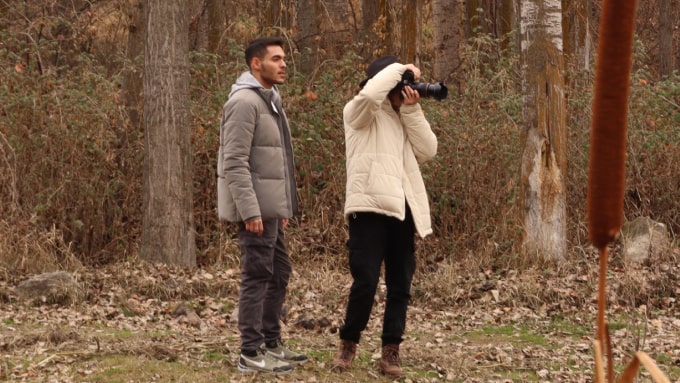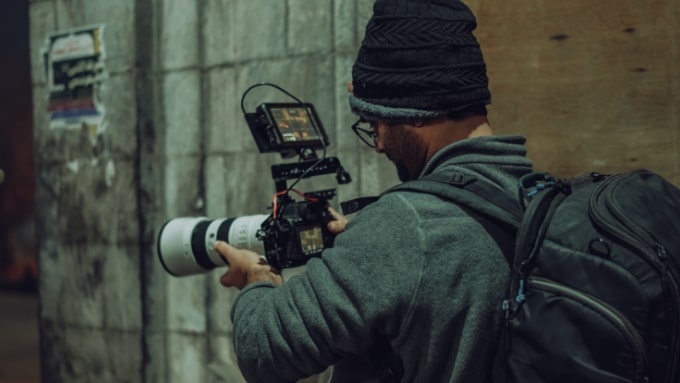Photojournalism is a powerful tool for storytelling that combines the visual impact of photography with the journalistic principles of accuracy, fairness, and objectivity. It plays a crucial role in documenting the world around us, from major global events to local human-interest stories.
In this article, we’ll explore the diverse world of photojournalism, including its different fields, the role of technology, the importance of diversity, and ethics.
The Different Fields of Photojournalism
Photojournalism is a broad field with various specializations. Here are some of the different fields of photojournalism:
News Photojournalism
Involves covering breaking news events, politics, and world affairs. News photographers need to be able to work quickly and efficiently, capturing moments as they happen. They often work in fast-paced environments and face tight deadlines. They need to be skilled at capturing the essence of a story in a single image.
Sports Photojournalism
This kind of photographer involves capturing sports events and athletes. Sports photographers need to be skilled at capturing movement and action. They also need to have an eye for capturing emotion and drama, as sports events often generate intense emotions.
Feature Photojournalism
Feature photojournalism involves telling stories through photos, often focusing on human-interest subjects. Professional photographers who specialize in features and storytelling have the advantage of having more time to work on a project compared to their news photography counterparts.
This extra time allows them to capture and convey more intricate and sentimental moments. Additionally, feature photographers are granted greater creative freedom!
Documentary Photojournalism
Documentary photojournalism involves covering issues, events, or cultures in-depth, often over an extended period of time.
These aim to tell a story through a series of images that provide a deeper understanding of the subject matter, often work on long-term projects, and have more creative control over the final product.
War Photojournalism
Involves documenting wars and conflicts in different parts of the world. War photographers often work in extremely dangerous and volatile situations, risking their lives to capture important events. They need to be skilled at working in unpredictable and chaotic environments, and they need to be able to capture the human impact of war.
The Role of Technology in Photojournalism
Advancements in technology have had a significant impact on photojournalism. Digital photography has made it easier and faster to capture, process, and distribute images. It has also made it possible for anyone with a smartphone to capture and share images of events as they happen, leading to the rise of citizen journalism.
While digital photography has many advantages, it also has some drawbacks. Some critics argue that the ease of digital manipulation makes it harder to trust images as accurate representations of reality. Others argue that the ease of digital distribution has led to a saturation of images, making it harder for photojournalists to get their work noticed.
Despite these challenges, technology continues to play a crucial role in photojournalism. New tools and platforms are constantly emerging, providing new opportunities for photojournalists to tell stories in innovative ways.

The Importance of Diversity in Photojournalism
Diversity is essential in photojournalism. The field needs to represent a range of perspectives and experiences to accurately capture the world around us. Photojournalists from different backgrounds can bring unique insights and approaches to their work, providing a more nuanced and comprehensive view of the world.
Unfortunately, photojournalism has historically been dominated by white, male photographers. This lack of diversity has resulted in a limited perspective on the world and a failure to accurately represent the experiences of marginalized communities.
Efforts are being made to increase diversity in photojournalism. Organizations like Women Photograph and Authority Collective are working to support and promote women and non-binary photographers. The National Association of Black Journalists (NABJ) and the Asian American Journalists Association (AAJA) are working to increase the representation of journalists of color. These organizations provide training, mentorship, and networking opportunities for photographers from underrepresented communities.
Increasing diversity in photojournalism requires a commitment from publications and news organizations as well. These organizations need to prioritize hiring and promoting photographers from diverse backgrounds, as well as providing a supportive and inclusive work environment.
Ethics in Photojournalism
Ethics are essential in photojournalism. As visual storytellers, photojournalists bear the weighty responsibility of faithfully capturing the world as it exists while upholding the dignity and privacy of the individuals and communities they document.
Striking a delicate balance between producing captivating, emotionally resonant images and safeguarding their subjects’ well-being is essential.
One of the most significant ethical dilemmas in photojournalism is the issue of consent. Photojournalists need to obtain the consent of their subjects before taking their photo, particularly in sensitive or vulnerable situations. They also need to consider the impact that their photos may have on the people they are photographing, particularly if those photos may be used in a way that could cause harm.
Photojournalists also need to consider their own safety when working in dangerous or volatile situations. They need to balance the need to capture important events with the need to protect their own well-being.

Conclusion
Photojournalism is a diverse and challenging field that plays a crucial role in documenting the world around us. It requires a combination of technical skills, journalistic integrity, and a commitment to ethical principles. With the rise of new technologies and platforms, photojournalists have more opportunities than ever before to tell important stories in innovative and impactful ways.
However, photojournalism still faces significant challenges, particularly around diversity and ethics. Increasing the representation of photographers from underrepresented communities and promoting ethical practices are essential for ensuring that photojournalism accurately represents the world and respects the dignity of all people.
As consumers of media, we also have a role to play in supporting ethical and diverse photojournalism. By seeking out and sharing the work of photographers who are committed to these principles, we can help promote a more accurate and inclusive representation of the world around us.


